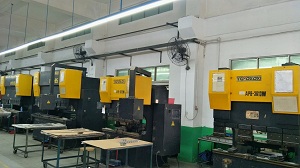Sheet Metal
BEST Parts Sheet Metal Fabrication Services
|
|
Sheet metal parts are found almost everywhere and BEST Parts can help you quickly and accurately make your enclosures, brackets, assemblies, weldments, cabinets, housings and other sheet metal parts and prototypes. Our MOQ is one and offer options for low/mid volumes.
|
|
|
BEST PARTS Laser cutting
The traditional sheet metal processing includes shearing, blanking and bending processes. Among them, the blanking process requires a lot of molds, which wastes a lot of time cost and money.
Laser cutting is an efficient and high-quality flexible processing technology. Laser sheet metal is not only simple to process, more flexible, but also lower in operation and maintenance costs.
Plasma Cutting
When the thickness of the metal sheet exceeds 20mm, the plasma cutting machine has more advantages than the laser cutting machine. The thicker the metal sheet, the higher the power required for laser cutting machine processing. The equipment purchase cost will increase significantly. Therefore, in the process of metal thick plate material processing, comprehensive processing costs, efficiency, effects and other aspects are considered. CNC plasma cutting machine is Ideal choice.
CNC Bending
Faster processing speed, higher strength of finished products, beautiful corner processing, accurate plastic size.
CNC bending machine uses the equipped mold (general or special mold)
Bending metal sheet in cold state into various geometric cross-sections.
It is a sheet forming machine designed for cold rolled sheet metal processing, widely used in automobiles,
Aircraft manufacturing, light industry, shipbuilding, containers, elevators,
Bending of sheet metal in railway vehicles and other industries.


Laser cutting is a technological revolution in sheet metal processing, and it is a "machining center" in sheet metal processing. The laser cutting process has the advantages of flexibility and high flexibility. In view of the problems of traditional sheet metal cutting at this stage, the demand for laser cutting is also increasing.
How It Works
There are 3 common stages in the sheet metal fabrication process, all of which can be completed with various types of fabrication tools.
Material Removal: During this stage, the raw workpiece is cut to the desired shape. There are many types of tools and machining processes which can remove metal from the workpiece.Material Deformation (forming): The raw metal piece is bent or formed into a 3D shape without removing any material. There are many types of processes which can shape the workpiece.
Assembling: The completed product may be assembled from several processed workpieces.
Sheet metal manufacturing can be further processed in the following ways
|
● bending |
● Cutting |
● Annealing |
● CNC Machining |
● Folding |
|
● Drawing |
● Stamping |
● Welding |
● EDM |
● Press |
|
Standard-Processing Mode |
Material |
Processing Cycle |
Tolerance |
|
bending, shearing, staking, laser, stamping and wire cutting, as well as CNC punching, CNC folding, drilling, tapping, countersinking and counterboring |
aluminium, brass, stainless steel, copper, metal sheet etc
|
1~2 days CAD model design 1day Prepare the material 3days Put into production 1 day Detection & packing |
with drawing: +/- 0.025 mm No drawing: ISO 2768 medium
|
Advantages of Sheet Metal
√Quick and inexpensive √ Hard wearing √Flexible solutions √Range of materials
Used forPrototypes and low volume production, medical and communications products, housings and enclosures.
Sheet metal processing generally uses materials such as cold-rolled sheet, galvanized sheet, copper sheet, aluminum sheet, stainless steel sheet, aluminum, etc.
Categories
Contact Us
Contact: Emily
Phone: +86 158 1864 3701
Tel: +86 (0755) 2377 2505
Email: emily@bestinparts.com
Add: Changshantou Industrial Park,No.149 QingZhang Road, QingXi Town,DongGuan,China 523662

 lura
lura